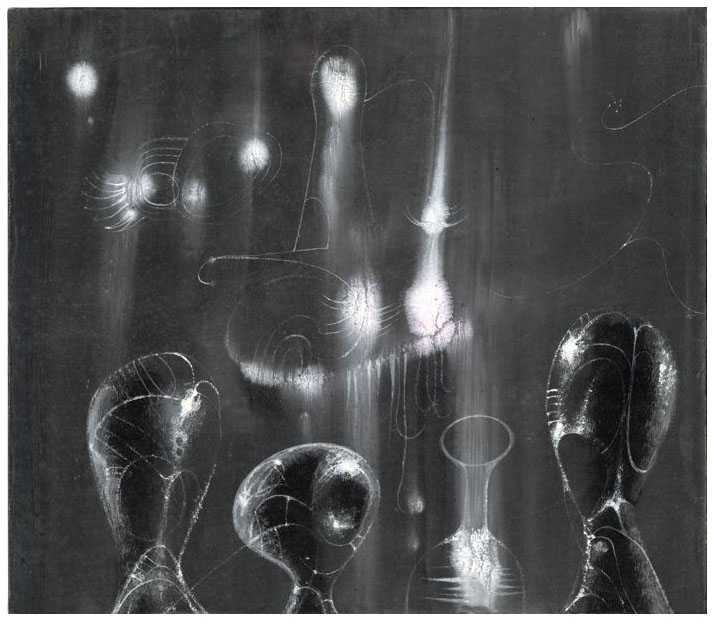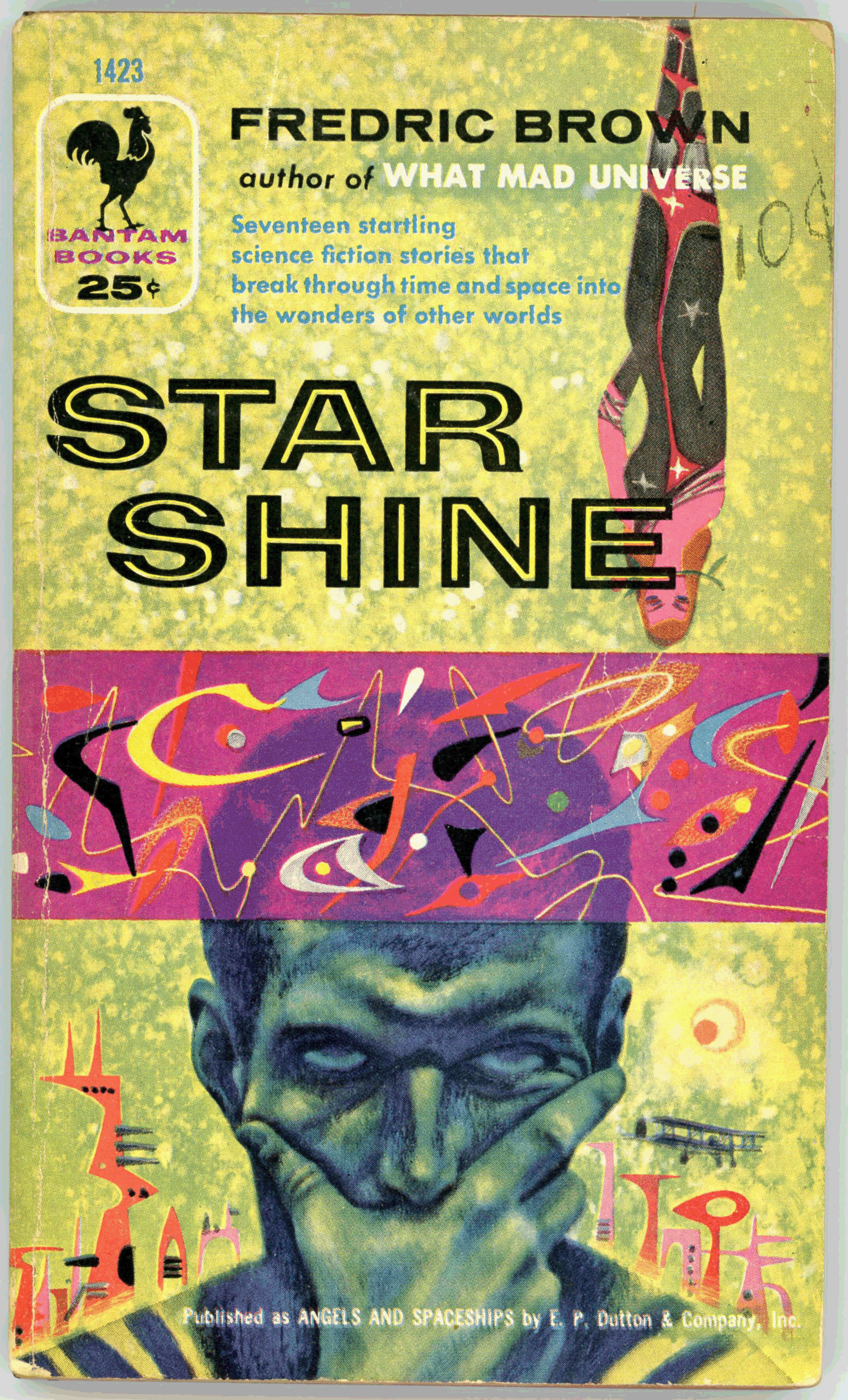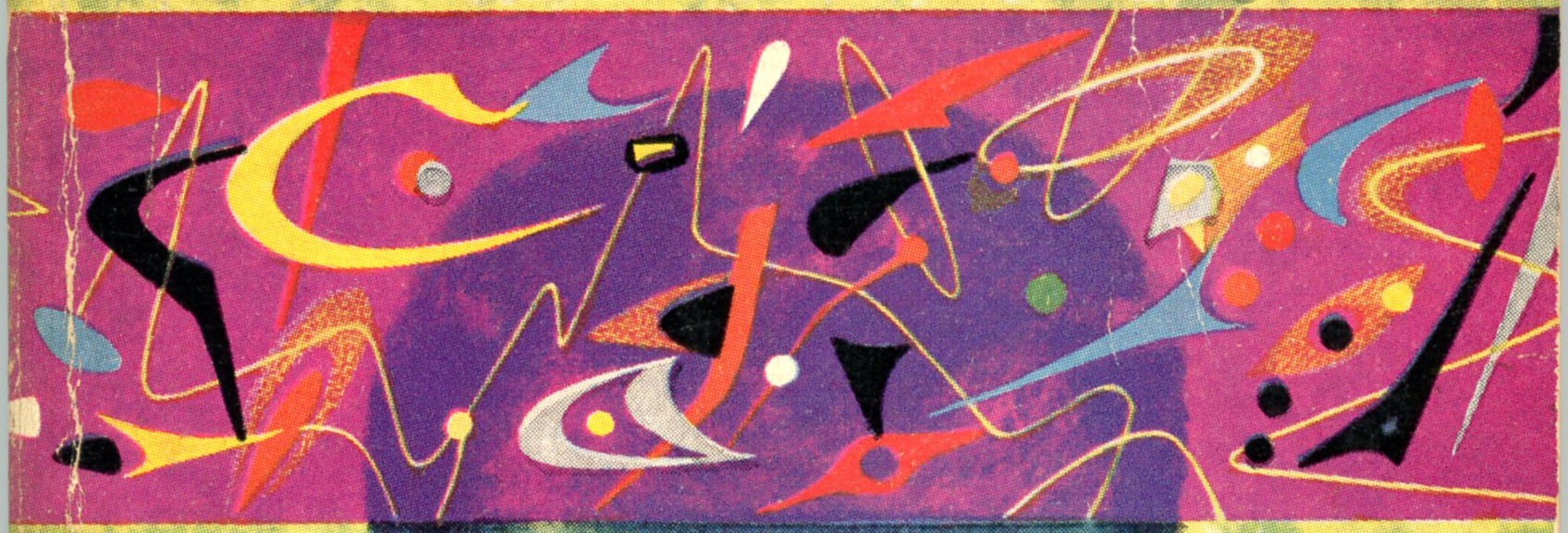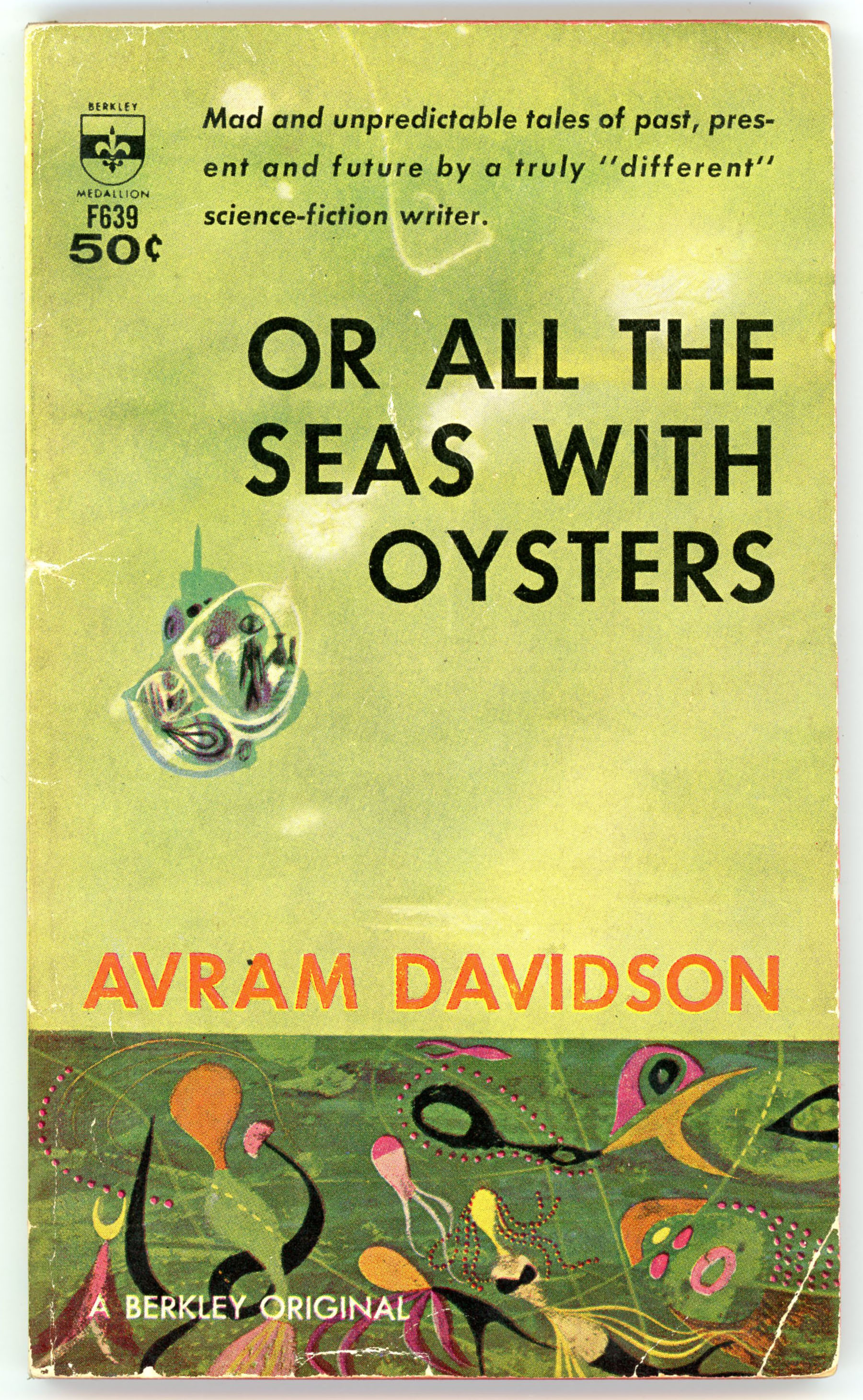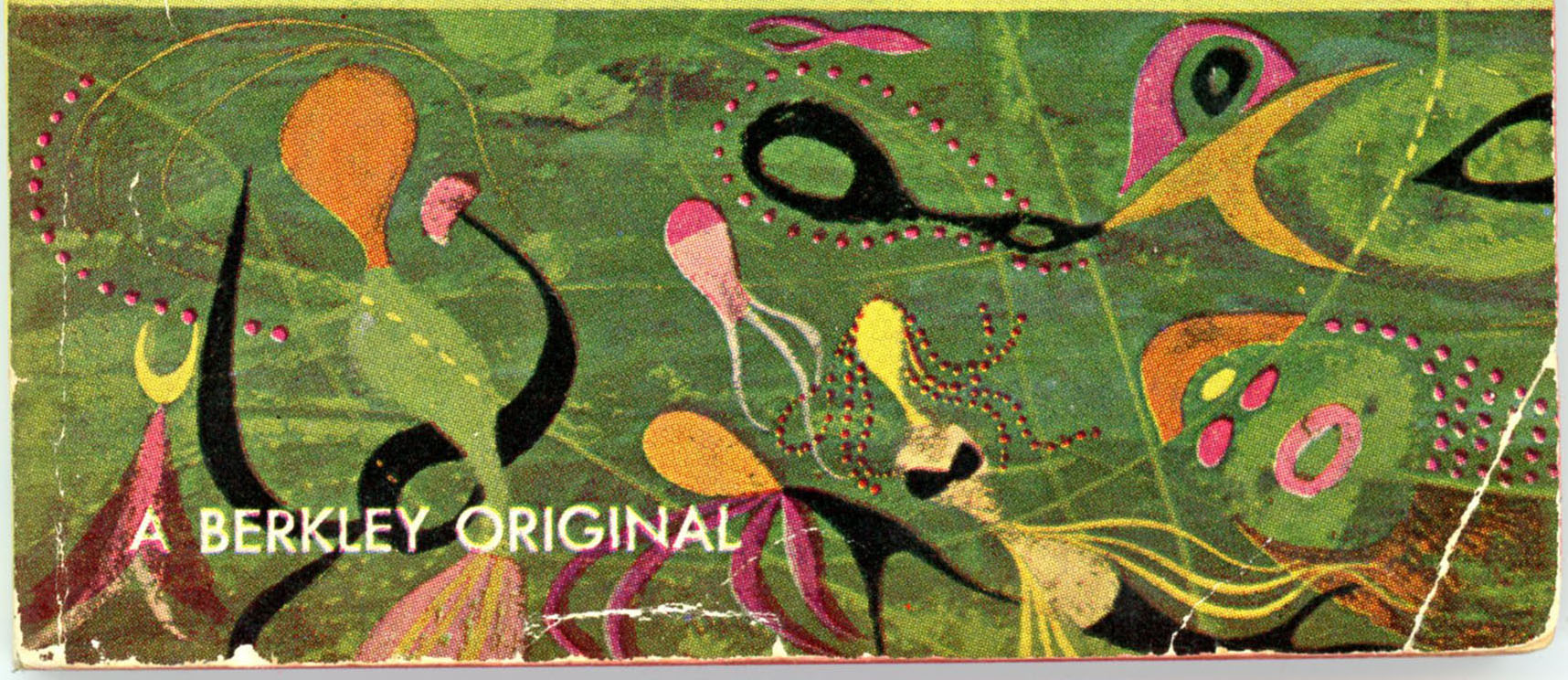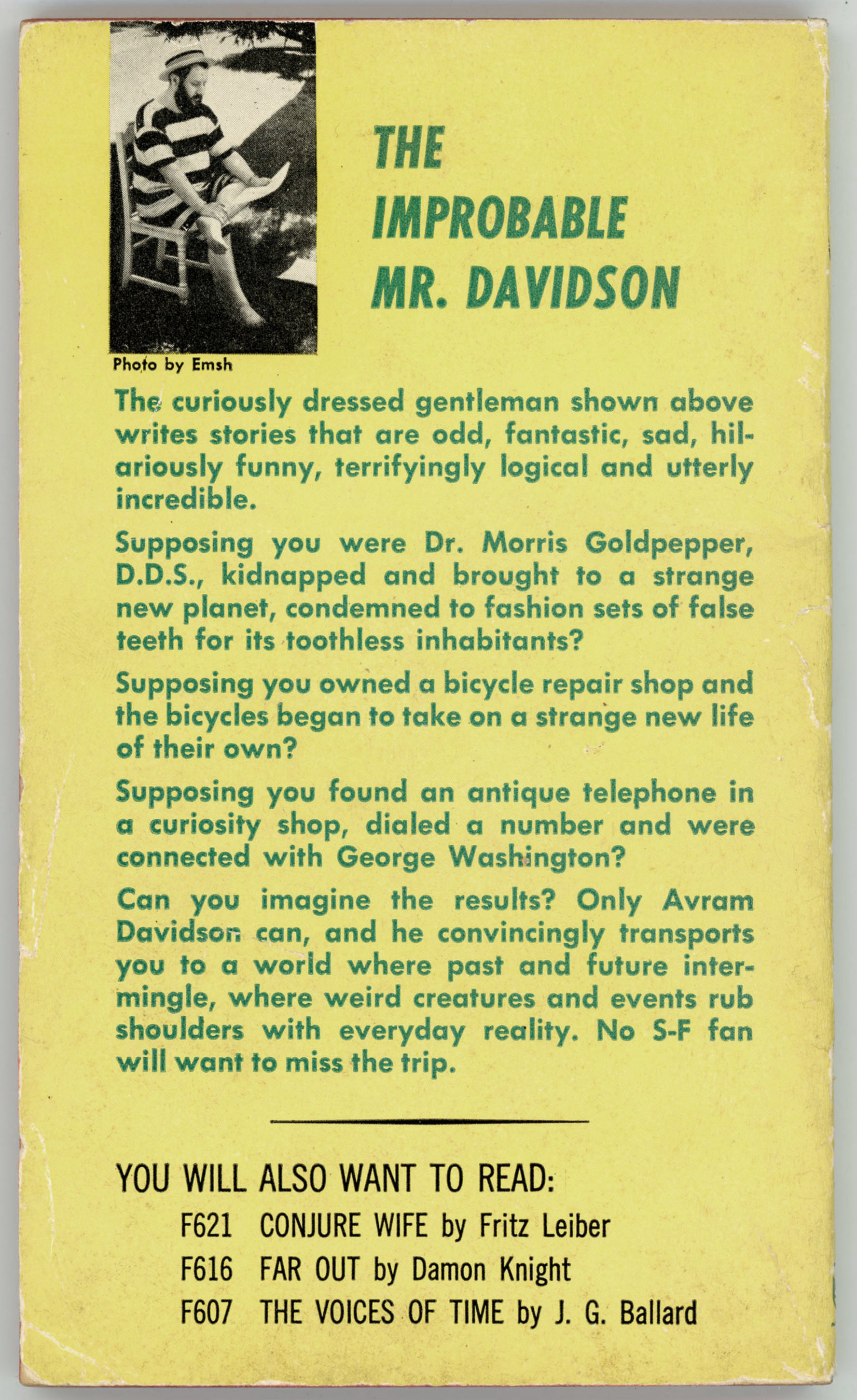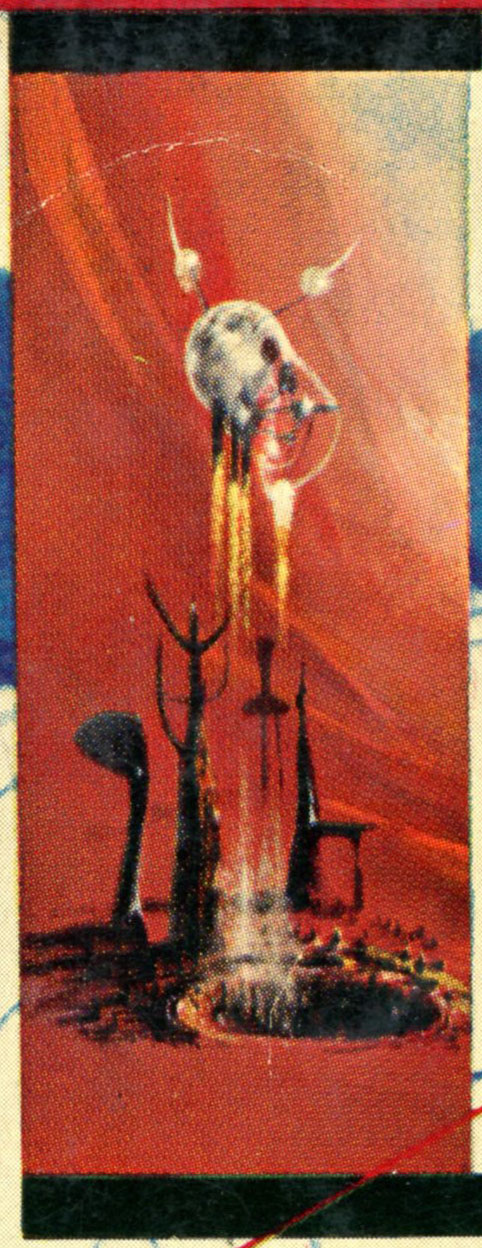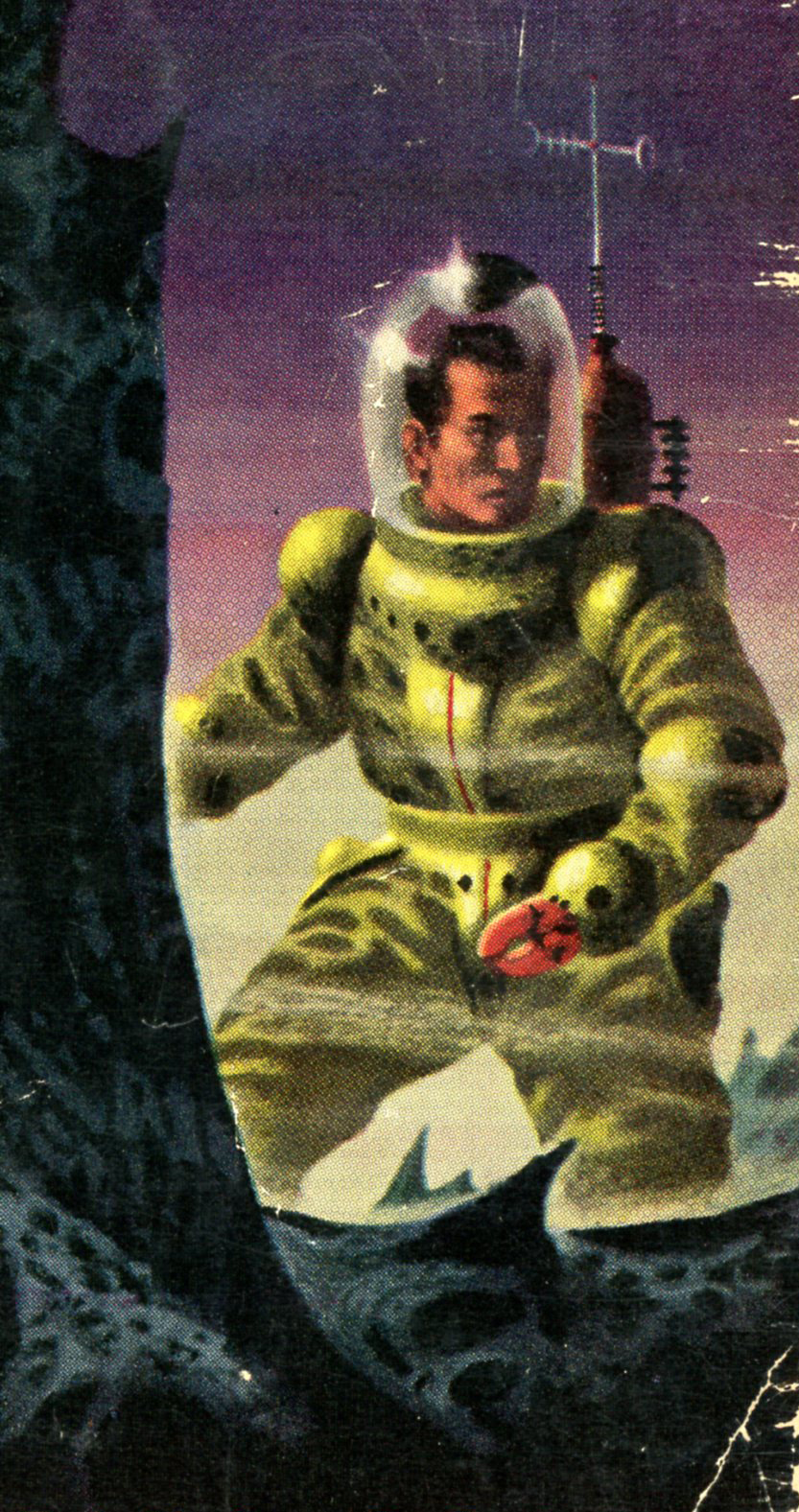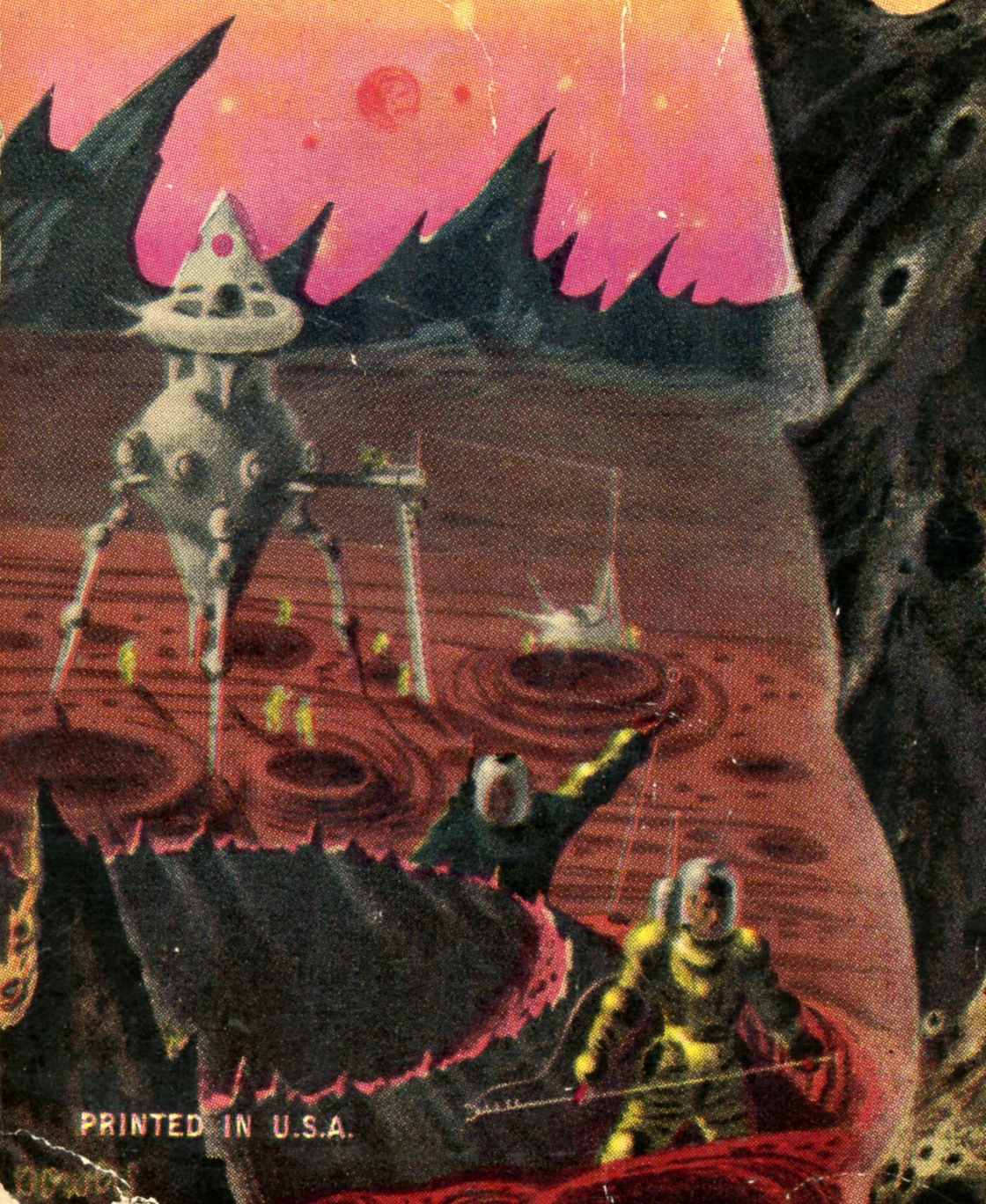For Ballantine Book’s 1961 paperback edition of Arthur C. Clarke’s Tales From the White Hart, Richard Powers took an approach that was both consistent with and a departure from his usual style: He depicted a group of subtly outlined creatures in an anthropoid-mechanical style (some floating in the background), yet instead of using contrasting, bold, primary colors, the composition was completed entirely in black and white.
If not as striking as much of his work, the composition is cleverly consistent with the very title of the book!
Preface (essay by Arthur C. Clarke, 1957)
Silence Please (variant of “Silence, Please!”), from Science-Fantasy, Winter, 1950
Big Game Hunt, from Adventure, October, 1956
Patent Pending from Adventure, November, 1954
Armaments Race, from Adventure, April, 1954
Critical Mass, from Space Science Fiction Magazine, August, 1957
The Ultimate Melody, from if – Words of Science Fiction, February, 1957
The Pacifist, from Fantastic Universe, October, 1956
The Next Tenants, from Satellite Science Fiction, February, 1957
Moving Spirit
The Man Who Ploughed the Sea from Satellite Science Fiction, June, 1957
The Reluctant Orchid, from Satellite Science Fiction, December, 1956
Cold War, from Satellite Science Fiction, April, 1956
What Goes Up (variant of “What Goes Up…”), from The Magazine of Fantasy and Science Fiction, January, 1956
Sleeping Beauty, from Infinity Science Fiction, April, 1957
The Defenestration of Ermintrude Inch
______________________________
Close-up of Powers’ cover, showing – perhaps?! – the enigmatic denizens of the White Hart…
______________________________
A rather serviceable back cover. Well, it does the job of telling about the book, while promoting some of Clarke’s other works.
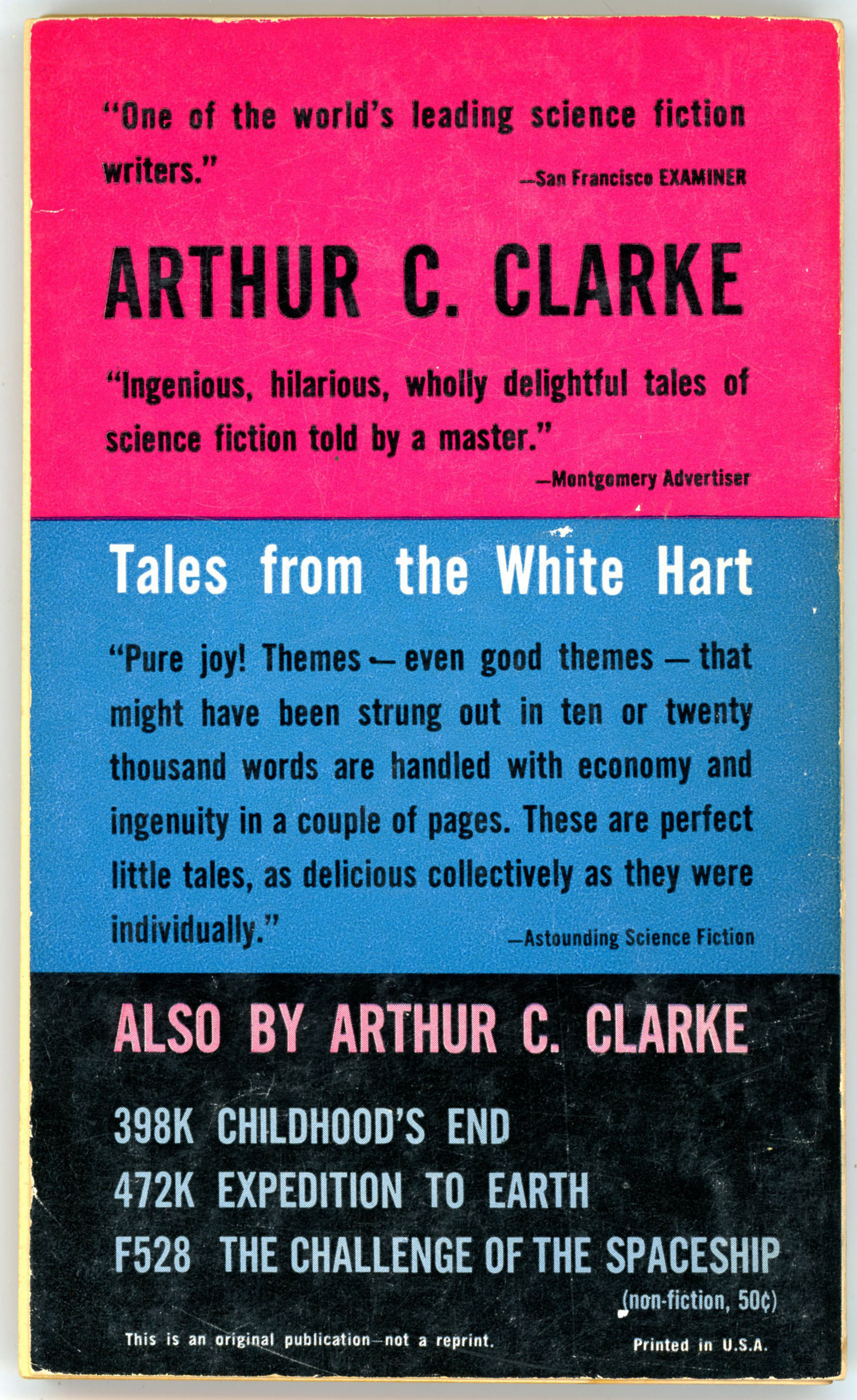 Other things to pleasantly distract you…
Other things to pleasantly distract you…
Tales From the White Hart, at Internet Speculative Fiction Database
Big Game Hunt (short story by Arthur C. Clarke), at Wikipedia
Patent Pending (short story by Arthur C. Clarke), at Wikipedia
Armaments Race (short story by Arthur C. Clarke), at Wikipedia



